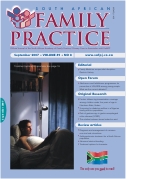Treatment Options for Insomnia
Abstract
The frequency of sleep disruption and the degree to which insomnia significantly affects daytime function determine the need for evaluation and treatment. Physicians may initiate treatment of insomnia at an initial visit; for patients with a clear acute stressor such as grief, no further evaluation may be indicated. However, if insomnia is severe or long-lasting, a thorough evaluation to uncover coexisting medical, neurologic, or psychiatric illness is warranted. Treatment should begin with non-pharmacologic therapy, addressing sleep hygiene issues and exercise. There is good evidence supporting the effectiveness of cognitive behavior therapy. Exercise improves sleep as effectively as benzodiazepines in some studies and, given its other health benefits, is recommended for patients with insomnia. Hypnotics generally should be prescribed for short periods only, with the frequency and duration of use customized to each patient’s circumstances. Routine use of over-the-counter drugs containing antihistamines should be discouraged. Alcohol has the potential for abuse and should not be used as a sleep aid. Opiates are valuable in pain-associated insomnia. Benzodiazepines are most useful for short-term treatment; however, long-term use may lead to adverse effects and withdrawal phenomena. The better safety profile of the newer-generation non-benzodiazepines (i.e., zolpidem, zaleplon, eszopiclone, and ramelteon) makes them better first-line choices for long-term treatment of chronic insomnia. Copyright © 2007 American Academy of Family Physicians.) Permission from the AAFP was granted to publish this article in the hardcopy only. Kindly refer to www.aafp.org or subscribe to the hardcopy of South African Family Practice.
Section
CPD
By submitting manuscripts to SAFP, authors of original articles are assigning copyright to the South African Academy of Family Physicians. Copyright of review articles are assigned to the Publisher, Medpharm Publications (Pty) Ltd, unless otherwise specified. Authors may use their own work after publication without written permission, provided they acknowledge the original source. Individuals and academic institutions may freely copy and distribute articles published in SAFP for educational and research purposes without obtaining permission.

